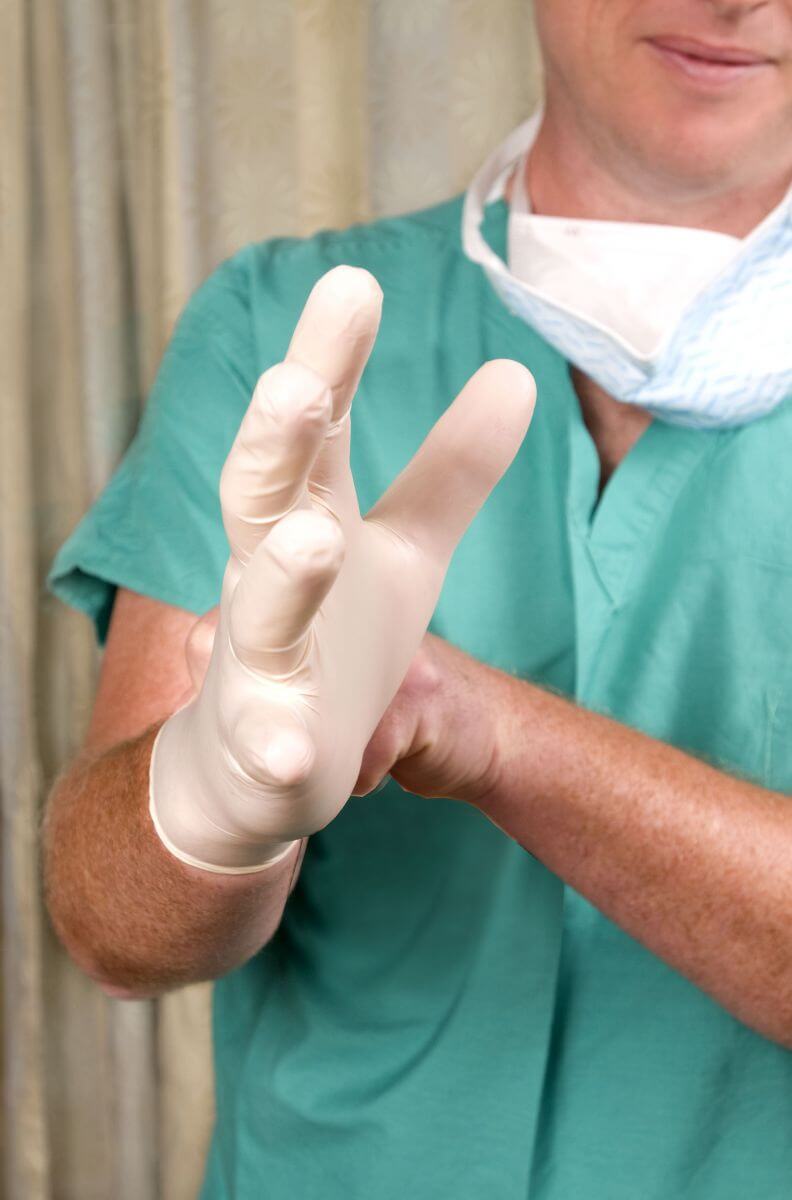Author: lic. rat. med. Jerzy A. Kozłowski
Rękawiczki ochronne rotective gloves ensure the safety of patients and healthcare workers. In Poland, healthcare-associated infections affect approximately 700,000 patients annually. Hospital infections are a significant public health issue, and the WHO estimates that their treatment costs up to 80 billion dollars worldwide each year. Therefore, it is no surprise that there is a strong emphasis on improving the quality of infection control systems and the need for the use of personal protective equipment.
Not so clear rules for putting on disposable gloves
W teorii kwestia tego, kiedy zakładamy rękawiczki jednorazowe, jest intuicyjna i każdy pracownik systemu ochrony zdrowia nie powinien mieć problemu z odpowiedzią na to pytanie – w praktyce sytuacja wcale nie jest oczywista. Między innymi dlatego WHO opracowało schemat, nazwany „piramidą pomagającą podejmować decyzję, kiedy należy nosić (lub nie) rękawiczki”.
First: hand hygiene
Disposable gloves protect the patient as well as medical staff, caregivers, or those providing assistance, from the risk of infection and prevent the transmission of biological agents through the hands. Hands are the primary source of transmission for up to 90% of pathogens. Dłonie są głównym źródłem transmisji nawet do 90% patogenów.
Microorganisms can remain on the skin after contact with contaminated surfaces. Typically, this duration ranges from 2 to 60 minutes, but for some pathogens, it can be significantly longer, such as up to 4 hours for rotavirus, over 2.5 hours for Staphylococcus aureus, and up to 90 minutes for E. coli. Meanwhile, the coronavirus SARS-CoV‑2 can survive up to 3 hours in aerosol form, up to 24 hours on cardboard surfaces, and up to 72 hours on stainless steel or plastic.
Guidelines for Using Single-Use Gloves
The mandate to wear gloves applies to all medical staff. Only effective and thorough hand hygiene, adherence to safety rules, and the use of disposable protective gloves can minimize the risk of infection or transmission of pathogens. The following rules should be observed: work in short-sleeved clothing (with certain exceptions) and without jewelry that could puncture the glove; maintain nail and hand skin hygiene, and use appropriately selected gloves that provide comfort and an adequate level of protection.
Medical staff should be trained in the proper way to put on and remove gloves, as it turns out that during their removal, the skin is contaminated in nearly 53% of cases (according to a 2015 American study involving a group of 435 workers).
In what situations should we wear protective gloves?
The “pyramid to help decide when to wear (or not) gloves,” proposed by WHO, helps determine when to put on disposable gloves, in which situations sterile gloves are required, and when they are not necessary.
Disposable protective gloves are not required*:
- In cases where there is no exposure to blood, patient bodily fluids, and contact with contaminated environments, surfaces, or objects.
- In the case of direct contact with a person during: blood pressure measurement, pulse measurement, bathing and dressing the patient, transport, care of the eyes and ears (without secretion), etc. The WHO pyramid also indicates that there is no need to wear gloves for subcutaneous and intramuscular injections, however, the national consultant’s position in epidemiological nursing differs. Important: These guidelines do not apply to exceptional situations such as epidemics.
- In cases of indirect contact with the patient without the risk of contact with blood and secretions. Such activities include administering oral medications, providing oxygen, completing medical documentation, etc.
*Except in epidemiological situations, such as during the COVID-19 pandemic or others.
Although gloves are not required in the specified situations, this does not mean that they cannot be worn for personal safety. Additionally, the above points do not apply to contact with patients under contact isolation.

The obligation to wear non-sterile gloves:
- In any situation where there is a possibility of contact with blood, bodily fluids, and secretions.
- During direct contact with blood, mucous membranes, damaged skin, potentially contaminated material during medical and diagnostic procedures and examinations.
- During indirect contact with the patient in situations where the environment may be contaminated with secretions, blood, or bodily fluids.
The obligation to wear sterile disposable gloves:
- Disposable sterile gloves should always be worn during surgical procedures, childbirth, invasive radiological procedures, procedures related to vascular access, and the preparation of parenteral nutrition and chemotherapy.
Wearing Gloves — Summary
The “pyramid to help decide when to wear (or not) gloves” is a clear and recommended framework that, complemented by proper hand hygiene and adherence to medical procedures, can reduce the number of hospital infections by half and significantly increase the safety of the staff itself. Gloves not only reduce the risk of transferring biological agents via hands but also substantially limit the number of worker infections, for example, by mechanically stopping about 50% of biological material during needle sticks.
Additionally, it is important to emphasize that not only healthcare workers, but also, for example, family members visiting a patient in the hospital, should at least disinfect their hands, and in certain situations, also wear disposable gloves.
Bibliography:
1. dr. Beata Ochocka, „Piramida stosowania rękawiczek ochronnych WHO – polska perspektywa; kilka uwag i refleksji o groźnych infekcjach”, Magazyn Pielęgniarki Operacyjnej, #1(18)/2017 s.7–9;
2. dr n. med. Katarzyna Majda, lek. Sławomir Gondek, „Zmniejszenie ilości zakażeń szpitalnych poprzez odpowiedni dobór rękawic”, Skamex Sp. z o.o. Sp.k.;
3. Materiały Ministerstwa Zdrowia i NFZ, „Przestrzeganie higieny chroni przed koronawirusem”, portal internetowy pacjent.gov.pl (16.03.2020);
4. World Health Horganisation, „Hand Hygiene: Why, How & When?”, portal who.int;
5.„Stanowisko Konsultanta Krajowego w dziedzinie pielęgniarstwa epidemiologicznego w sprawie używania rękawic ochronnych do wykonywania iniekcji podskórnych, śródskórnych i domięśniowych”, portal pieleganiarki.info.pl (21.09.2010);
6. Stowarzyszenie Epidemiologii Szpitalnej, „Higiena rąk w placówkach medycznych na podstawie rekomendacji Światowej Ochrony Zdrowia”, Szkolenie dla pracowników medycznych, portal ses.edu.pl;
 Polski
Polski